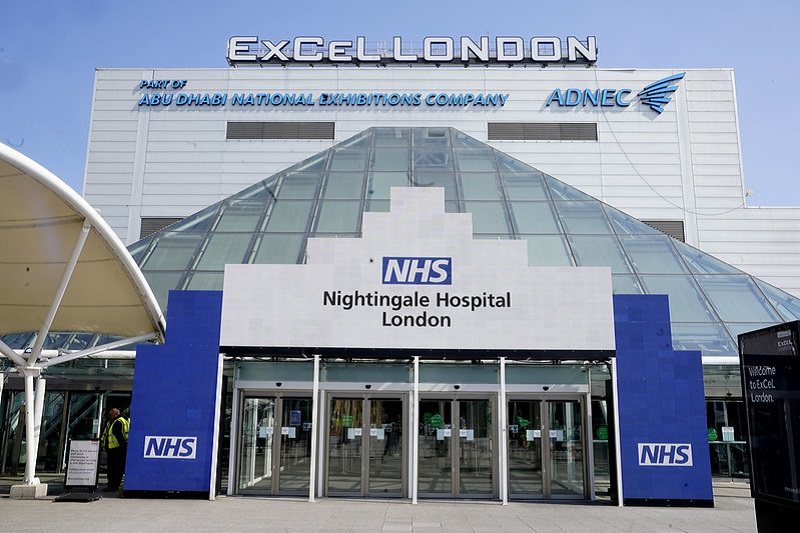Built out of necessity, and with the first stage completed in just nine days; the new NHS Nightingale Hospital in east London has set a new UK standard in modular construction.
And, with more hospitals since having opened in Birmingham, Manchester, Harrogate and Glasgow, among other cities; the NHS is striving to provide much-needed additional capacity for the treatment of COVID-19 patients.
While risk management has always been a key focus for project managers; the increasing scale and complexity of many modern infrastructure programmes has, to some extent, pushed it down the pecking order of priorities.
The key to success
During the COVID-19 crisis, however, risk management has risen to the top of the project agenda as the industry strives to deal with the challenges of complying with government-imposed restrictions at the same time as delivering much-needed buildings that are fit for purpose, as quickly as possible.
Against this backdrop of constraints, the key to success for the project manager lies in meticulous and precise planning.
During the COVID-19 crisis risk management has risen to the top of the project agenda as the industry strives to deal with the challenges of complying with government-imposed restrictions at the same time as delivering much-needed buildings that are fit for purpose, as quickly as possible
Bill Zuurbier, chairman of risk management consultancy, Equib, explains: “The process starts by asking key questions, such as ‘what should the end product look like and how is it to be operated?’, ‘who is capable of delivering it?’ and ‘when must it be completed?’
“Then all relevant stakeholders, including those that will be using the building, must come together to produce drawings and agree designs.
“The success or failure of the project is often determined by the approach taken in these early-stage workshops and the degree of contractor involvement.”
The successful completion of the first NHS Nightingale Hospital, which officially opened on 3 April, is especially important as lessons learned by the project management team went on to inform later projects elsewhere in the country, some of which are still ongoing.
“The emergency situation and critical nature of the ongoing projects means there is no scope for error and the designs produced during early-stage meetings must be right first time,” said Zuurbier.
“Most projects are driven by the main factors of health and safety, quality, time, and cost.
“In the midst of a pandemic, however, it is clear that health and safety, quality, and time are the most important.
“Timelines for the construction of each of the Nightingale hospitals have been dictated by data about the spread of the virus and the number of patients expected to require treatment in an intensive care environment.
A changing landscape
“In a fast-moving situation, however, changes affecting government restrictions mean that health and safety considerations must be kept under regular review.
“Using an experienced contractor which is used to implementing policies quickly and managing shift handovers efficiently, even when working with multiple specialist subcontractors, is therefore essential.”
The UK construction industry should take pride in what has been achieved in an incredibly-short space of time. It is testament to the world-class expertise of our project managers and contractors and the potential of offsite construction techniques
Best-practice methodologies can play an important role in helping project management teams to prioritise risk factors, before deciding how to eliminate or mitigate them, says Zuurbier.
“As part of an initial risk assessment, a Risk Breakdown Structure can be used to identify and categorise risk factors, before ranking them as high, medium or low risk, or even, more simply, tolerable and intolerable.
“At the new Nightingale Hospital for example, managing access and use of space are key priorities, particularly as the site is already operational; allowing the treatment of a small number of patients in one area, while completing the build in another.
“A robust programme of works is also required. This will ensure that the first phase of works, which might include the completion of 500 beds equipped with ventilator and oxygen equipment, is completed on time, before moving on to the next 500, and so on.”
The risks attached to managing construction work in one part of the site while treating patients in another would be considerable at any time.

The true test of whether the Nightingale hospitals have worked, according to Zuurbier, is if NHS staff notice a difference
Meeting the challenge
But, when combined with the invisible risk posed by the coronavirus, it is clear that the situation is incredibly challenging for all concerned.
“As well as protecting construction workers from the risk of contamination by separating work areas and creating different access points, steps must be taken to minimise the impact of noise and dust leakage into the hospital environment,” said Zuurbier.
“The true test of success for the Nightingale hospital projects is whether NHS staff notice any difference.
The true test of success for the Nightingale hospital projects is whether NHS staff notice any difference
“The environment created must be as good as, if not better than, that which they are used to working in every day.
“The success of these projects may also be measured in terms of the number of lives that are saved.
“Time will tell on both counts, but the UK construction industry should take pride in what has been achieved in an incredibly-short space of time. It is testament to the world-class expertise of our project managers and contractors and the potential of offsite construction techniques.”




